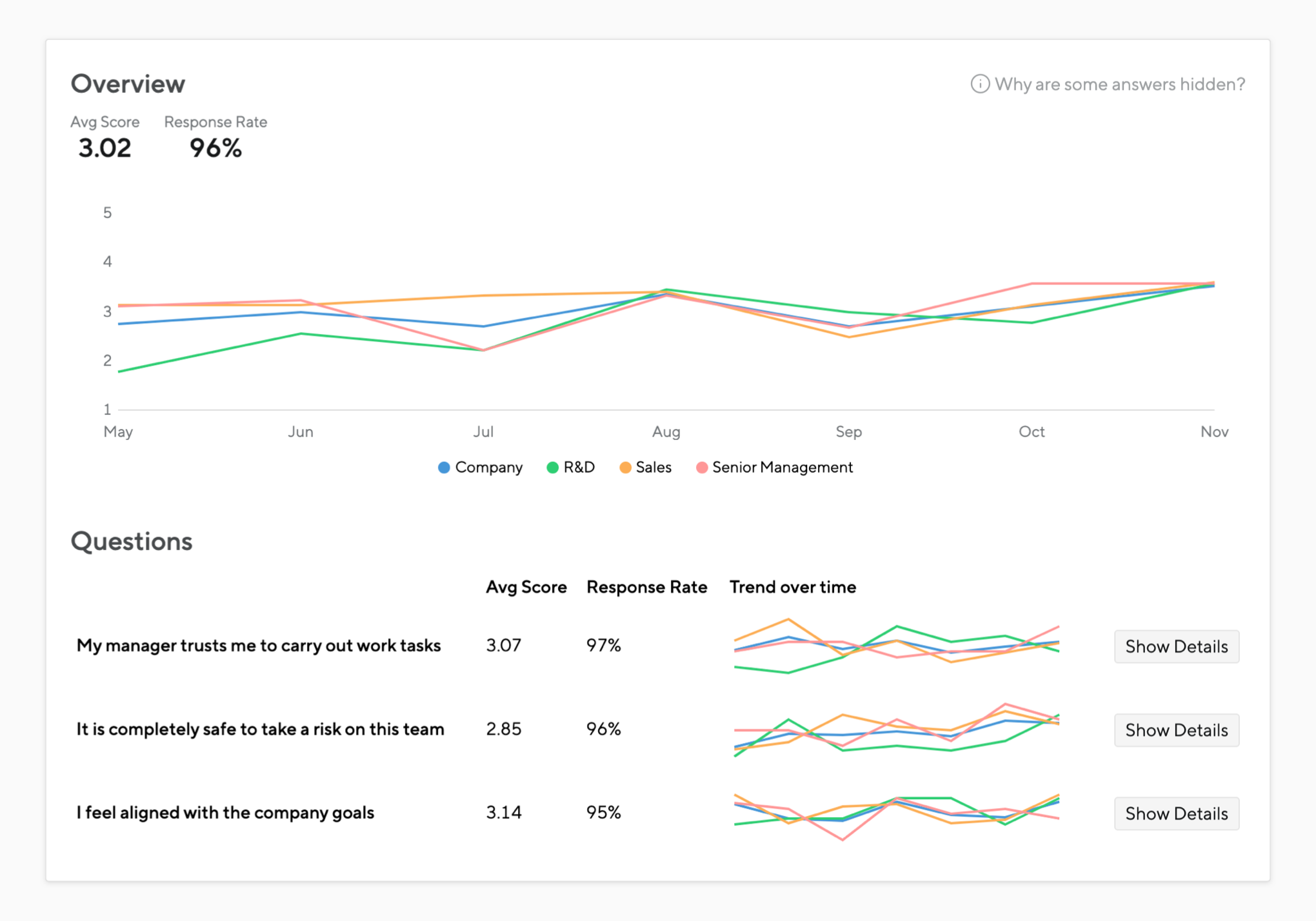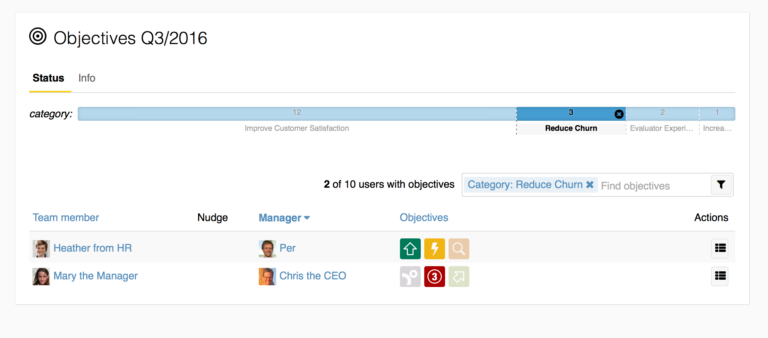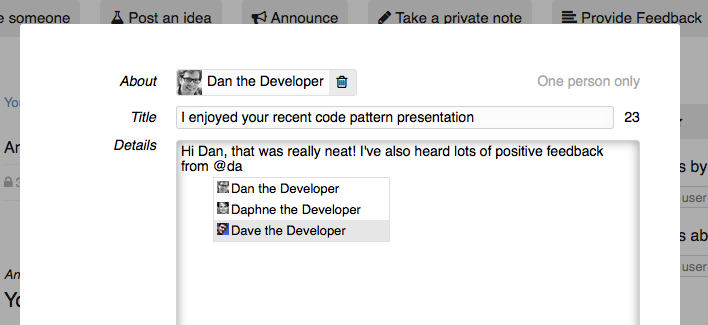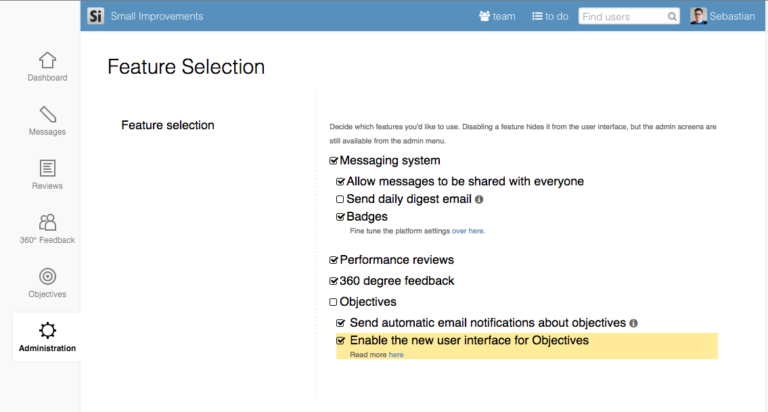Organizations need frequent feedback just as much as employees do. Feedback helps companies spot issues with employee engagement early on – and double-down on what’s working well.
To make informed decisions all year round, HR teams have turned to pulse surveys as sources of solid data on employee engagement. They help them design a great employee experience, create productive work environments, and retain staff. So what’s the ultimate purpose of pulse surveys, why are they so valuable, and what should People teams know to run and communicate them effectively?
What’s a pulse survey?
Pulse surveys are a lightweight method of gathering meaningful real-time feedback from employees.
While the pulse survey is a fairly new addition to the HR team’s toolkit, employee surveys aren’t anything new. For decades, organizations have used annual or biannual engagement surveys to check employee morale and gather insights on the drivers of employee engagement in their teams. Survey findings can inform internal company initiatives to improve engagement and morale in the future. Before engagement surveys, attitude surveys were used to assess similar things as far back as the 1920s.
Both engagement and attitude surveys ultimately suffered from the same problems – they’re infrequent and often tiresome to complete. Pulse surveys attempt to address these issues head-on, through simple, more frequent feedback rounds that employers use to check the “health” of their organization.
Benefits of running pulse surveys
There are three areas where pulse surveys truly bring value to organizations, their employees, and their HR teams. If you’re thinking about running a pulse survey, communicating these benefits can help you get buy-in from leadership and staff.
Gather concrete data for the organization
- Track trends over time. Just introduced a new remote work policy? Track how it affects employee engagement over time, helping you course-correct along the way.
- Make informed decisions with solid data. Recent large events, like mergers or office moves, can skew your larger annual or biannual survey results. Use pulse surveys to get more consistent, reliable data over time.
Improve employee experience
- Champion employee voice. Studies show that a lack of employee voice can hinder productivity and “shut down creativity,” which is a huge problem for organizations wanting to innovate. Show your employees that you value their opinions and contributions to organizational decision-making.
- Habitualize feedback. Many organizations recognize the value of feedback for employee growth, so why not apply this to the organization at large?
Enhance larger engagement surveys
- Fill in blind spots. Larger engagement surveys are great to get a detailed snapshot of employee sentiment across the whole organization, but they’re too rare. Create a cadence combining pulse surveys with engagement surveys to get the best of both worlds, and surface issues faster.
- Get responses from time-poor employees. Employees dread larger engagement surveys as they’re tiresome to complete. Pulse surveys can be completed on the fly, in lightweight forms, or even via Slack!
Pulse survey best practices
Now you know the benefits of pulse surveys, here are some handy tips to have under your belt when rolling them out in your organization.
Make them confidential
Open, honest feedback is core to the success of any engagement survey. If employees know that their answers are confidential or anonymous, they’ll be more likely to respond and offer their honest take.
Watch your length
Another factor that can hit your participation rates is the length of your questionnaire. So how many questions should be in a pulse survey? As always, it depends on your organization. If you’re unsure, start with 4-6 questions. Remember: You can always ask those extra questions the next time around.
Conquer your communication
When you let your people know about the survey, be sure to communicate the “why.” How will results be used, and why do you value their feedback? Then consider timing and your communication channels (email, Slack, all-hands meeting, intranet, etc.), especially if certain teams prefer particular channels or you work across timezones.
Take action on results
What’s the point of running a pulse survey if you don’t act on the results? Only 8% of employees strongly agree their organization takes action on surveys. So it’s no wonder employees might need convincing to participate. Offer them intrinsic motivation by highlighting how results will be used and pointing to action from previous surveys.
Pulse survey questions
The frequency of pulse surveys means that you have plenty of room to experiment with questions. Add in new questions on specific topics to respond to your current climate. And be sure to design a questionnaire that’s relevant to your organizational context. Here are some examples to get you started:
All-round pulse survey
- I am proud to work for [Your Company]
- I see myself working here in two years’ time
- I regularly feel motivated to do my best work
- I feel aligned with the company goals
- I would recommend [Your Company] as a good place to work
Temperature check
- How are you doing this week?
- How manageable is your workload this week?
- How well is your team performing?
Check out more examples in our full pulse surveys question bank.
Pulse survey software
Keeping track of frequent pulse surveys can be a challenge. It takes a lot of work to manually send out surveys and combine results. It’s also difficult to guarantee anonymity, which is so crucial to the success of employee surveys. That’s why many organizations choose to run pulse surveys using a dedicated tool.
Core features of pulse survey software often include:
- Pulse survey questionnaire builders, with different types of questions, e.g. ratings or open-text questions.
- Question banks to provide inspiration and unbiased questionnaires.
- Automated reminders and invitations for participants.
- Charts and reporting to see how responses and participation rates change over time, plus data exports.
There’s no shortage of pulse survey tools out there, so it can be hard to select the right one for your organization. Start by considering your participant’s perspective – does the tool have an accessible user interface that will make completing surveys a breeze? Then check to see if the platform integrates with your communication channels and that it has the features you need without overwhelming you with needless complexity.
If you’re a medium-sized organization interested in combining feedback from employees with a wider culture of ongoing feedback, then take a look at our Pulse Surveys tool or request a demo of Small Improvements.
Additional resources
- Here’s a great article from the not-for-profit Engage for Success movement on why investing in engagement pays off. It positively impacts productivity, levels of absenteeism, retention, innovation, and customer service.
- According to Gallup, one-third of employees report being surveyed less than once per year. “Clearly, organizations can be doing more to take the temperature of their employees.”
- This SHRM article has practical tips for employee surveys, including that they shouldn’t take more than five to seven minutes to complete.




